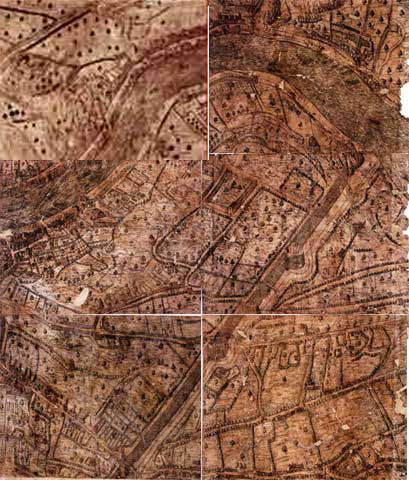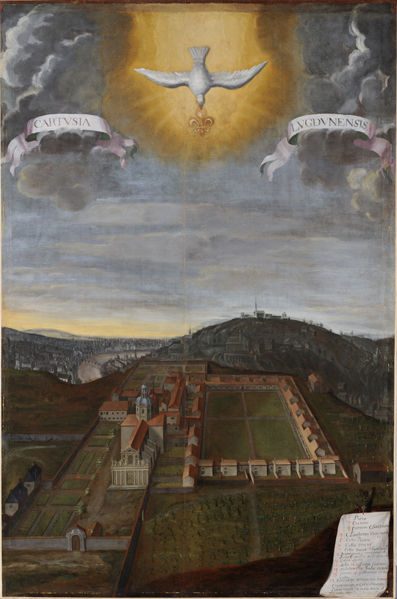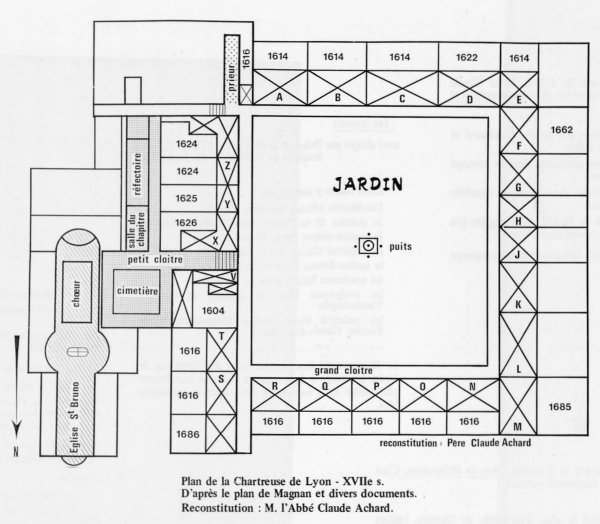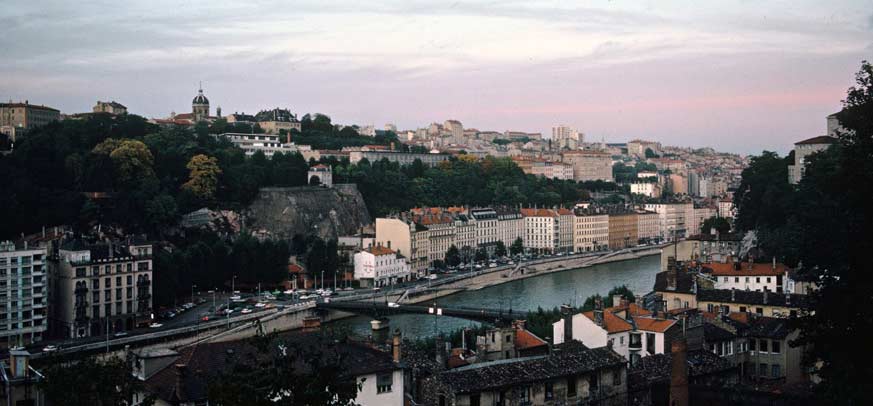Geschichte der Sankt-Bruno-Kirche und der Kartause
Ihr Gebiet erstreckte sich von den Befestigungsanlagen -heute boulevard de la Croix-Rousse-bis zur Saône.Von der Kartause bleiben heute übrig : die Sankt-Bruno-Kirche, der kleine Klostergang, Friedhof der Mönche, und das in der impasse des Chartreux gelegene Gebäude des Pfarrhauses, mit dem Kapitelsaal, ebenfalls Exerzitienkapelle genannt.
Einige Einige historische Anhaltspunkte :
1580
Das in Chambéry versammelte Kapitel der Kartäuser beschließt die Gründung einer Kartause in Lyon.
1584 August
Anlässlich eines Besuchs in Lyon nennt der König Heinrich III. die künftige Anstalt „Chartreuse du Lys Saint -Esprit“ (Kartause der Lilie des Heiligen Geists) und verspricht eine Spende von 30.000 Pfund, die er nie leisten wird.
1584 Oktober
Die Kartäuser erwerben das Gut „La Giroflée“ („die Levkoje „), auf dem die.
1590 April
Grundssteinlegung der Kirche nach den Plänen von Jean Magnan.
1590-1605
1590-1605 Bau des Chor.
1616-1690
Errichtung der Mauern des Hauptschiffs und der Kuppel. Wegen Geldmangels ziehen sich die Bauarbeiten hin und werden von 1631 bis 1646 sogar 15 Jahre lang eingestellt.
1736-1750
Beendung und Vergrößerungen der Kirche nach den Plänen von F. Delamonce. Die Bauarbeiten werden unter der Leitung des Letzteren, dann von Soufflot durchgeführt. Zur Finanzierung der Bauarbeiten müssen die Kartäuser mehrere Anleihen aufnehmen.
1791
1791 Verkauf der Kartause als „Nationalgut“ während der französischen Revolution. Von den 8 Posten findet nur derjenige der Kirche keinen Abnehmer. Schließung der Kartause und Ausweisung der 17 dort ansäßigen Mönche.
1803
1803 Gründung der Pfarrei Sankt-Bruno-der-Kartäuser . Die Kirche wird zur Pfarrkirche.
1823-1879
1823-1879 Umgestaltung der Seitenkapellen, der Kirchenmöbel (Kanzel, Orgel, Kreuzweg) und Bau der gegenwärtigen neo-barocken Fassade unter der Leitung von Tony Desjardins und Sainte-Marie Perrin.
1911
1911 Die ganze Kirche wird unter Denkmalschutz gestellt.
Location of the Charterhouse of Lyon
Scenographic plan of Lyon and the “La Giroflée” property
In the 17th century, the “La Giroflée” property spread from the Saone to the fortifications of the Croix-Rousse (today replaced by the boulevard of the same name). It was purchased in October 1585 by the Carthusians to establish the Charterhouse of Lyon under the name “Chartreuse du Lys Saint-Esprit” (“Charterhouse of the Lys of the Holy Spirit”).
Extract from „Plan scénographique de Lyon“ about 1550
Archives municipales de Lyon, 7 S 8 , cliché J. Gastineau/AML 5 Ph 26760
The Charterhouse of Lyon in 18th century
Plan of the Charterhouse of Lyon in 18th century
(painting around 1730, collection of Museum of the Grande Chartreuse)
The construction works of the second campaign according to the plans of Delamonce were completed with the exception of the façade. The latter, not visible on the drawing, would only be undertaken much later in 1870-1871 by Sainte-Marie Perrin, in the spirit of the 18th century.
Today all that remains of the charterhouse are the church, the little cloister, and the presbytery building which shelters the chapter house (chapel of retreats). Some vestiges of the cells of the monks were included in civilian buildings subsequent to the sale of nationalized properties at the beginning of the French Revolution.
(photo studio Basset)
Plan of the Carthusian in 17th century
The charterhouses were, at the origin, situated in isolated places such as mountains or forests. Beginning in the 17th century, popes and princes established charterhouses in towns. But the principles of isolation, silence and contemplation were always respected in the choice of sites.
The general plan is approximately the same for all charterhouses :
– a large cloister around which are distributed the cells of the monks with a small garden,
– a little cloister which leads to the church, with the adjoining chapter house and dinning-room,
– the church,
– the Prior’s house,
– the converses’ house.
Cross-section of the Church as existed in 1736
(Archives départementales du Rhône)
The little door at the end of the choir opens on to the small cloister through which one could enter into the chapter house and the dinning-room.
Lyon, 2003, Croix-Rousse hill, looking the belfry of St-Bruno church on the left.
(photo Jean-Marc Berthier, laboratoire Gris souris Lyon)










